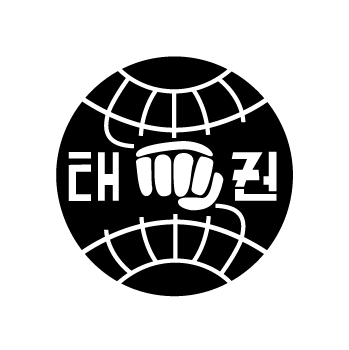MEMORIES OF THE TUL TOUR 1
AND
HANDY FACTS ABOUT SOUTH KOREA
BY
THE ITF-NIGERIA
AS COMPILED BY:
FIT. OGUNMUYIWA GBOLAHAN
CHAPTER ONE
INTRODUCING THE PREMIER TUL TOUR BY ITF-KOREA
PREAMBLE: Words are insufficient to capture the extent to which my martial arts experience was redefined. I felt, for the first time, like a true taekwondist, at the end of the Tul Tour 1. A special acknowledgement goes to Master George Ashiru and my co-delegates from ITF-Nigeria (Messrs Umar Ahmad and Saad Adams) for the selfless efforts directed at making the epoch trip to the cradle of Taekwondo. A similar appreciation is directed to all individuals and corporate organizations that showed strong supports during the preparation.
This chapter would give a day-by-day account of what happened during the tour in a summarized form.
DAY 1: A welcome dinner was arranged for all participants of the Tul Tour 1 by the organizing crew. The event was held in the mini conference hall of the Hyatt Incheon Hotel, where we first lodged. A preamble of the entire programme was given by Dr Zibby Kruk and every participant was asked to give a short introduction of him/herself from the podium.
The dinner was half-Korean and half-Western. Basic costumes for the tour were distributed to all participants. These included a branded sports bag filled with branded souvenirs like towels, a dubok, etc
DAY 2: It rained heavily the previous day till midnight. The morning was fine. We checked out of the hotel and were driven to the city centre were we had a breakfast. After the meal we embarked on a 100mins journey to the Dangun mt park. It took us about an hour to get to the peak of the mountain which is approximately 2km above sea level. For the first time I found myself walking into the thick clouds of the sky amid light rain showers.
A general picture was taken at the peak, though the gate leading to the final ancestry spot of the late hero (Dangun) was under padlock for reasons unknown to us. Though not all made it to the peak, yet Nigeria was the second to get there. We spent about 30mins descending the mountain and we were ordered to line-up for the first training session of the TT1. Basic stances and techniques of the Dangun Tul were analyzed while we all performed the pattern.
As we drove off the park, we viewed the enormous mountain in awe and imagined if we had been to the cloud-covered peak of the extrusive landform. Our tour guide (Miss Ginnin) said this was the highest mountain in South Korea. We stopped after a 15mins bus drive to have our first lunch in a S/Korean agrarian community. The surprise here was that the restaurant, though traditionally fashioned, looked descent and as clean as the others we later visited in the city centres. I must confess that I had been on quasi hunger-strike since the breakfast time because the cuisine had been so strange to what I had been taking here in Africa.
The bus conveyed us back to Seoul for a training at the Dosan park. As usual, Master Kruk designated one of the senior colleagues to lead the warm-up session. We rehearsed all techniques relating to the tul and were asked to perform the whole Dosan tul in quadruplets. We took pictures and marched some
300m across a couple of streets to have the day’s supper. Done with the supper, we filed out across the street to a distance of about 500m and stepped into a theatre where we were entertained with Korean traditional music and taekwondo demonstration by the Moosin Music group, under the control of Prof (Mrs) Sabina Kim. This was planned to unwind us from the stress of the early morning mountain-climbing and the various rigorous trainings. We were driven to the Grand Hotel for the night.
DAY 3: Having taken our breakfast, we were driven to the centre of the city of Seoul where the An-Jeongun Memorial park is situated. The park stood at the foot of a hill almost of the height of the historical Olumo Rock in Abeokuta, Nigeria. We spent almost two hours training the Jeongun tul and its component movements. This done, we had a walk into the museum, collected souvenirs from the attendants and embarked on a journey towards the North-Eastern coast of S/Korea. After journeying for about 11/2 hrs, we had a lunch-break at a beautifully designed travelers’ easing point. For the first time, since the tour started, we were permitted to choose between two kinds of lunch dishes. Perhaps as a result of accumulated hunger or joy of options, I ate satisfactorily, ignoring taste differences. We were soon on the journey passing by Pyeonchang and other major cities. We drove for about 3hrs more, going through enormous mountain ranges, peaks, gorges and about sixteen (16) different tunnels of varying metric length and finally arrived at the Gangneung Ojukheon city museum. We were told that Ojukheon is the sacred site where the mother and teacher of the nation (Korea) were born. We had an extensive training at this site ranging from lower limb flexibility stretches to patterns rehearsals.
We had a 15mins bus drive and landed at the ocean-kissing Hotel Hyundai where we first saw an electric-operated water closet. We checked-in and later drove along the coast to a marine-food restaurant where we ate roasted fish and shrimps of diverse species. It was an appreciated supper because the fishes and shrimps were of home taste. The only odd plate there was the sea-weed soup which I ignored after taking a couple of spoon-scoops. All these while, I have refused to use the chop-sticks but merely requested for forks (forku in the native Koreans pronunciation). The day had been so bright since morning and so it was all-through.
DAY 4: Leaving the Hotel Hyndai around 8am, we were driven to a nearby traditional restaurant with special fish meal for breakfast. The hangover of the previous night prevented most of us from devouring much of the fish tabled before us. After the meal, we began another 4hrs journey back to Seoul. We had a lunch stop-over at the usual spot we had it when going to Gangneung and continued the journey till sunset when we arrived at The Presidential Hotel. We had been informed in the previous night that the day would be training-free so as to allow us recuperate substantially from the stress of the first-three days. We had an early supper and most of us strolled the city in groups of 3-4 for petty shopping.
DAY 5: At the point of boarding our bus, Ginnin informed everyone to pack all load and luggage together because we would be saying goodbye to the bus for a KTX-Cable-train trip to Busan (the second largest
city in S/Korea located in the south of the country). With the approximately 380km/hr speed, the train helped us with a journey that would had lasted 5hrs+ within just 45mins. On arrival at Busan, we were ushered into a spectacularly new bus and we drove straight for a lunch. The sky was bright and the temperature mild, so we drove for another 3hrs to the next training centre. The fact here is that the road trips to these sacred training sites were fatiguing, though interesting with the rolling landscape and horizon. After an hour training, we embarked on another 3hrs journey back to Busan. It was already dark and we had a stop to use the restroom and do some petty shopping. At last, we were checked into the Grand Hotel at Busan for the night.
DAY 6: We started the day with a trip to a suburb mountain park where we had the Cable Car experience amid heavy monsoon rainfall. The height was scary as the Cable Car glided through the tensional, low-friction line. It was like a trip to the space and we felt like Neil Armstrong on the moon with the rocks resembling that brought from the first lunar expedition in the mid 20th century.
After some hour drive we arrived at a predetermined spot for lunch and drove to a massive water-park. The complex was so grandeur with modern architecture and 21st century technology that I lack words to describe it full details. A caricature of a sandy beach existed for three different categories of people. The adult beach was a paradise on earth with different mimics of oceanwaves.Thedressing/changing/shower rooms and the three-temperature gradient saunas created a haven for fun among humans of different age levels.
Having exhausted ourselves in the pools, we were taken to the Sun-mu-do temple in Gyeongju city for another round of martial drills and monk training. An orientation class was held for us in the evening where the rules governing our stay in the temples were read out in capital letters. This was preceded by a supper around 6pm. I could not eat the meal, except the white rice which I managed to pick with my trial chop-sticks movements. Everything in the temple premises looked strange and scary. Our hostel was bedless but comely and we were warned against midnight roaming or any form of noise. A Polish student at the Temple acted as our interpreter. He had been there for three years.
-‘What will happen if I arrive late for the morning chant?’, I questioned, teasingly.
-‘Are you saying you will come late?’
-‘No, but tell me what would happen if this occurs’.
The Polish intermediary smiled behind a mean look and answered softly.
-You will be made to bow three thousand (3,000) times and this lasts for an average of 21/2 hours.
He added almost immediately.
-The punishment would become corporate just like what happens if a person returns dirty water into the blue bucket after a temple meal. The idea behind this is that you should be watchful of your colleagues’ attitude and put them in order. Else, all would suffer from the sin of one person.
-‘Are you saying everyone would be forced to make the 3,000 bow?, I questioned further.
-‘No, but everything will stand still till you complete the punishment.
I smiled and looked at him as he moved his legs in his baggy Sunmudo uniform to walk towards the dazzling training hall.
DAY 7: The previous evening training session at the Golgul temple was energy-consuming and full of moves that my body chemistry and frame-work had never gone through. We were taught basic facts about monks, temple-stay and Buddhism. Having been forewarned of the consequences of absence or late attendance to morning chanting, Miss Ginnin made it her duty to wake us up by 3:45am so that we can be at the temple by 4am for the early morning chants in a special temple situated at the top of a steep hill. Sleep left my heavy eyes when I remembered the three thousand bows I will be compelled to make if I miss or arrive late at the temple. We all dragged our heavy feet as we ascended the hill under the humid still air of the dawn. Birds made strange noises on the overhead shrubs covering our rocky path with bright lamp-stands at intervals.
We took part in the chants for the sake of experience and were transferred to another instructor who took us to another mountain for meditation and breathing exercise. The instructor said these routines were established to create discipline in every martial artist. He added that the study of martial art is preceded by sound discipline of the mind and the body and these serve as checks against human excesses and misuse of martial strength for the oppression of the weak.
The breakfast in the temple was another indelible experience. We were taught how to eat in a Monk’s way, using a set of four hollowed plates, a pair of chop-sticks and white napkins. Notable of the meal-time rules are:
1-arrange your plates in the right square order
2-never leave a grain of your food uneaten (zero tolerance for wastage).
3-absolute silence and concentration during meals
4-prompt cleaning of all meal utensils
5-thanksgiving to mother nature and other vehicles for the availability of the food.
6-Sex or gender-based arrangement of students at meal-times
7-the right to sit and reject food on service (Just cover your plates with the white napkins).
8-never return food remains under the excuse of plate cleaning, into the blue bucket. Your plates should be 100% clean before rinsing it with water and any remaining food particle should be gulped after the
rinsing. Servers are conscious of this when collecting the post-meal water but in a case they discover turbid water after general collection, everyone in the dining hall would be made to share the impure water e.t.c.
We had another round of training after the breakfast under the warm morning sun and later returned to our hostel for a nap which lasted for about two hours. By mid-day we were invited by the Grandmaster and the Monk-in-Charge, Jeung-Un Seol, for a lunch-hour chat where we were educated on the variations of monks and temple education. We were made to know that there are two types of students in the Sun-mu-do temple: some for monks training and others for instructors training. It takes two years to become a first-degree black belt instructor but more for a monk-in-training. The Sun-mu-do temple is the Korean version of the popular Shaolin temple in China.
Originally, monks and nuns are to live celibate lives like the Roman Catholic Priests, but the Japanese invasion of Korea brought some imperial dilutions into the cultural and religious systems of the Korean people. As a result, some married monks exist today. These political factors also brought variations in the functions of monks ranging from religious, military and humanitarian services to acute martial training. These emphases are the characteristic differences between Chinese, Korean, Mongolian, Japanese and Tibetan monks, amongst others. Not all monks train martial arts!
It was also said that Buddhism is not compulsory for anyone coming to the Golgul Temple for instructors course, but highly mandatory for all coming for monks training. The meeting was soon over and we proceeded to a performance arena higher on the hill for the much awaited farewell performance by the Sunmudo group. As the home of the President of Korean Traditional Martial Arts Federation, Grandmaster of the Zen Martial Arts and President of Sunmudo Alternative Therapy School, the Golgul Temple hosts the annual Korean Martial Arts Festival every last week of October.
We left the temple very tired and branched at the oldest observatory in Asia (built in the 8th century B.C) and continued on our journey to the next historical spot where a brief training session was staged on relevant tul techniques.
DAY 8: We had our breakfast in the hotel and this provided most of us denied animal flesh and livestock products at the temple with an opportunity to eat to satisfaction. It was a buffet with wide options. From here we were driven to the airport from where we flew to the Jeju Island. On arrival at Jeju International Airport, a new tour guide awaited us to replace Ginnin, who we bid farewell amidst tears of passion at Gimpo Airport a day earlier.
We had a nice lunch with spicy fish and other marine animals. By now I had become a guru in the use of chop-sticks. The rice meal tasted homely and I devoured three full plates with plenty of pork and fish. A bottle of soft drink was also served to wash down the tasty lunch-meal. From there we drove to Hallim park, which is a Sandy Beach on Jeju Island. Some aquatic trainings and fun took place on the beach amidst photographs. I also used the time to request a special class from a senior colleague on the tuls techniques. It was sunset and we drove back to The Hotel, still on the Island for a farewell dinner.
The dinner was done a day earlier because some of our colleagues from Venezuela will be leaving the following day. For this reason, all certificates and other socio-cultural facts about Korea was let out of the bags by invited experts from the Korean Ministry of Culture and Tourism. I was among those dressed in the Korean traditional dress called the Gimok. The new year family blessing for the children was acted and we were taught the origin and history of the Korean language, with reference books. We tasted the Korean rice cake.
DAY 9: We had our breakfast at the hotel restaurant and set out for the Sunrise Peak. The volcanic mountain was a figure to behold and took us about 20mins to get to the peak for a look on the crater and the city down. After another 15mins drive we arrived at Seopji-Koji- a movie location I named JEJUWOOD. I tasted an octopus for the first time during the lunch stop-over and drank the Korean traditional gin. It was sweet and fairly alcoholic, put in a vase-like jar. From this point we visited a waterfall, where we did the Chonji Tul and later went to the ARRIRANG Party centre where we had taekwondo display in its variations, ranging from free patterns to choreographic moves, mock hosinsul (self-defence), massive kyepka (planks breaking), ballet-like steps in Korean tunes and Martial Hi-hop steps. The galleria was an architectural masterpiece and scientifically super in terms of lighting, costumes and audience participation appendages. After about 120mins in the Arrirang galleria, we drove off, but stopped briefly to view another tourist attraction. From here we headed to the city of Jeju and stopped-over at E-mart to do the final shopping.
DAY 10: Some of our colleagues from Germany and Holland left very early in the morning. We were to leave much later in the day, so we visited the spirited garden to relax, unwind and have our lunch. By 1pm, we boarded an Asiana Airlines craft to Gimpo Airport from where we boarded an executive bus at the cost of 5,500 Won, each to Incheon. At Incheon, participants staying –over paid for their respective rooms in a motel, five minutes away from Incheon International Airport. I stayed with the rest till I was driven to the Airport by 10pm for my flight billed for midnight.
CHAPTER TWO
HISTORICAL PERSPECTIVE OF THE KOREAN TECHNOLOGICAL ADVANCEMENT
Hongik Ingank is the name of the founder and father of the Korean nation. The name means to live for the benefit of mankind. The nation of Korea was founded by this man some 5,000yrs ago. Hangul is the Korean language and one of the world’s few languages written in its originality. Only one percent of world’s languages retain their originality in writing and speaking and Korean is one of these. A great effort was exerted by King Sejeon The Great (1397-1450) at creating a written form of the Korean language. He completed this work in 1553 and was called the Hangul. It has 24 alphabets. Japan borrowed the writing of their language from the hangul. Chinese characters were too difficult for the general public.
Like other Asian countries such as China and Japan, Korea has a long history of technological achievements. Sokkuram grotto is one of such projects that depict the level of technological prowess of the natives in their contemporary days. On analysis, it was discovered that the Sokkuram Grotto is made up of more than 108 stones carefully plugged-in under exceptional architectural supervision. The Buddha statue also reveal the level of artistic precision of the Koreans in those ancient times. Other age-long creativities of the people of Korea in areas like marine transportation, warfare, hieroglyphic writing, textile, medicine, martial arts and fitness, show that technology is part of Korean history.
The Korean people had suffered military harassment from various imperial rogues at different times but had survived all the suppressions. With its strategic location at midline to adventurous empires, each of these super forces scrambled to control the Korean Peninsula for her selfish ambition. Of these separate invasions, the Japanese assault was the most memorable because it happened at a time when the world was already at the prime of civilization. Remarkable is the fact that Korea (South Korea) never assaulted any sovereign nation.
As done by other Western imperialist nations, Japan tried to obliterate all Korean socio-cultural and religious heritage in return for the Japanese civilization. Heroic records were made by patriots like Ahn-Jeung-Neung and the Japanese rule ended. The Korean war was another socio-political conflagration fuelled by imperialist nations and this slowed the wheel of progress in the country. The South Korea of today started in the late 1960s. Taekwondo was one of the tools of propaganda used by the nation. Though politically separated as the ITF and WTF, taekwondo continued to expand beyond continental boundaries and eventually became an Olympic medal-winning sport.
Today, South Korea ranks among the leading global economies through its expansive technological web. With the rate of structural development, the country would be a paradise by the year 2025. However, I long to witness the day the two brothers would be united. My expectation is not only a fusion of the ITF (International Taekwondo Federation) and WTF (World Taekwondo Federation) versions of the Art but the peaceful coming together of the two Korean nations to become UNITED KOREA. This shall happen and I wish it becomes a reality in my generation. One valid point behind my forecast is that the two Koreas are homogenic is several aspects of life and history. Political economy and, perhaps, a few other national priorities are the only elements differentiating them. With taekwondo, these will fade out for a common, one and single Korea (UNITED KOREA).
Korean technological prowess is felt in all spheres of the polity ranging from transportation to agriculture, entertainment, telecommunication, sports and education, to mention a few. Stuffs on display at the Arirrang party in Jeju and the Blue One water parks are sufficient to conclude that South Korea is the right destination for holidaying.
It is pertinent to add at this juncture that the Korean people are highly respective, receptive and real in their dealings with all, irrespective of racial or language differences. I observed these 3Rs since I stepped onto the Korean soil. Another excellent feature of the nation is the near-zero crime rate.
CHAPTER THREE
GAINS OF THE TUL TOUR 1 AND FURTHER SUGGESTIONS
At the end of the TT1, all participants had been:
-Physically and mentally drilled to fitness
-Taught new skills of taekwondo coaching
-Linked as families and one people related by taekwondo
-Taught rudimentary Korean culture in terms of language, food, socio-politics e.t.c.
-Given great holidaying experience and fun
-Opportuned to link-up with dignitaries and persons of potential friendship.
-Rendered major corrections on conflicting techniques in the ITF tuls.
-Lectured on the origin of Taekwondo and the Korean people
-Allowed to have a form of cultural exchange with other participants
-Made better taekwondo coaches/players than they came.
CHAPTER FOUR
SUMMARY AND CONCLUSION
As discussed earlier, Tul Tour 1 is a product of the Education and Research Arm of the ITF to which gurus like Masters George Vitale, George Ashiru, Zibby Kruk (PhD), Oh Chan Jin and Prof (Mrs) Sabina Kim contributed enormously. TT1, was a pilot project comprising of about 25 taekwondists from five continents of the globe. Three from Africa (Nigeria in particular); two from South America; three from North America; five from the Middle-East nations of Afghanistan and Pakistan (the latter had travel hitches); five from Europe; one from Oceania (Australia); and the rest from East Asia.
The underlying objective of the programme was to concretize taekwondo practice by giving the selected participants a full touch of Korea and the martial arts of taekwondo. It was also meant to expose the participants to other traditional combat sports/ martial arts of Korean origin like the Hapkido, Sunmudo, Traditional Wrestling and thereby make them (us) complete trainers of martial arts.
Through the TT1, my mind had been disabused of certain rumors concerning the religion, politics, diets and lifestyles of the Korean people. For instance, I learnt that Confucianism is not a religion but a philosophy. Before my trip, I had been of the notion that Koreans and other Orient Nations are fetish and ‘unwesternized’, but the programme offered me real-life explanations. Now I know the kind of art I am practicing.
Back here in Nigeria, the TT1 contigent (Umar A, Adams S and Ogunmuyiwa GAS) are in talks with Master Goerge Ashiru on how to organize a local Tul Training Tour in Nigeria before the end of the year 2011. Through this, we intend to educate our fellow practitioners on the reality of taekwondo.
Thank you for the reading patience and SEE YOU IN KOREA NEXT YEAR!
OGUNMUYIWA, G.A.S (NCE; BSc; MSc)
For: ITF-NIGERIA / Africa Lagos.

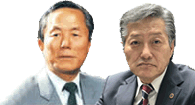

 Log In
Log In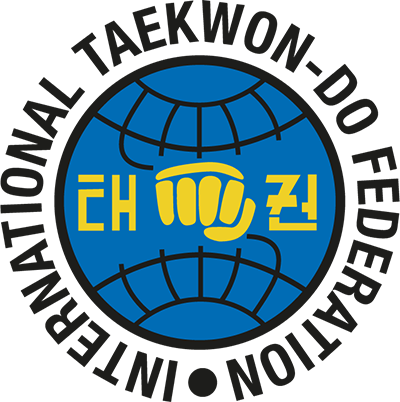
 Write an Article
Write an Article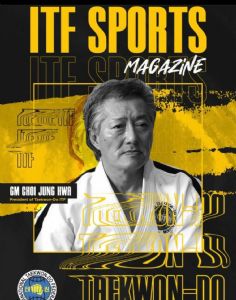
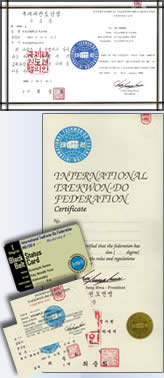
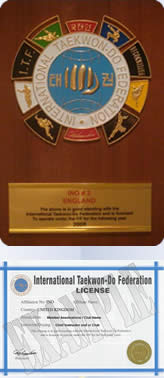
 Back
Back

